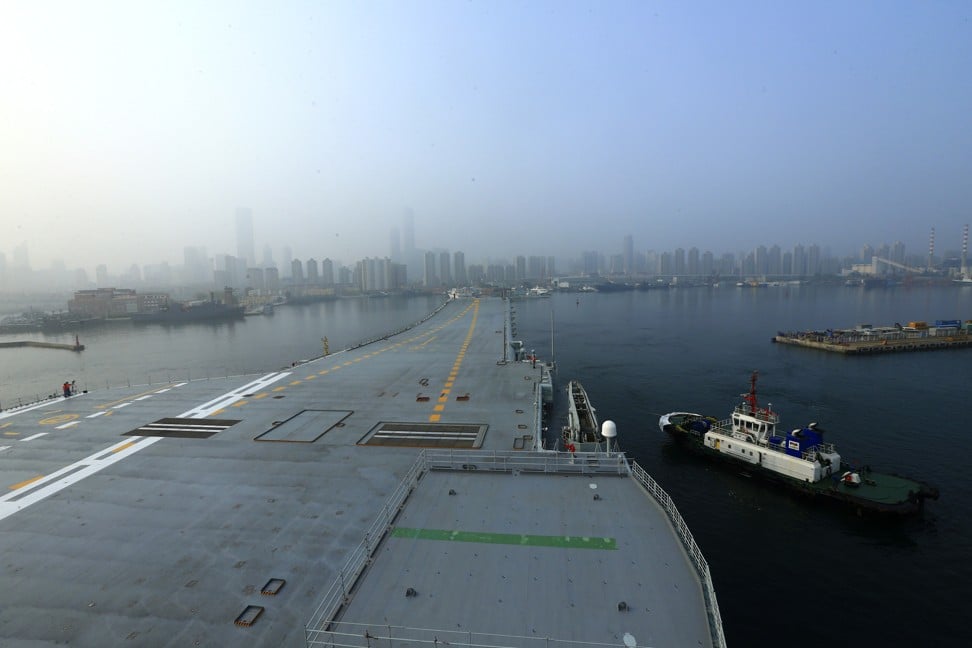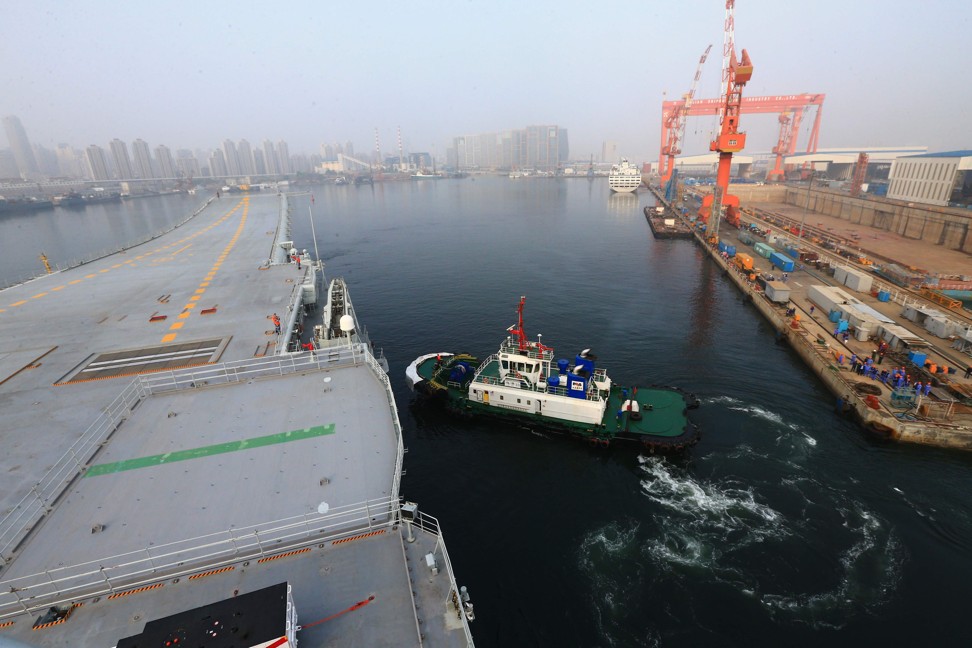New video from CCTV
From SCMP
Some statistic roughly 500 enterprises involve in the design and construction of the carrier It has
1600 cabin and at the highest peak of contsruction employ 3000 worker. 70% are civilian companies
Average age of the carrier designer is 36 years old. A young team at the peak of their creativity
First steel cutting is November 2013 So 4-1/2 years from first steel cutting to trial
China is ready to build bigger warships, its naval shipyard said as the first domestically built aircraft carrier began a sea trial early on Sunday.
The new warship was a collaboration between civilian contractors and researchers and the defence industry, Hu Wenming, chairman of the China Shipbuilding Industry Corporation, told state television on Sunday.
He said more than 70 per cent of the companies involved in the warship project were from civilian sectors.
The new aircraft carrier left the shipyard in northeastern Dalian at 6.45am, Xinhua reported, sailing out of the port half an hour later in heavy fog to put its home-grown power and propulsion systems to the test at sea for the first time.
Launched in April last year, the 65,000-tonne Type 001A has yet to be named and is an upgrade to the Liaoning, China’s only operational aircraft carrier – a retrofitted Soviet-era Admiral Kuznetsov-class multi-role vessel that went into service in 2012.
Naval experts said the Chinese engineers and designers behind the warship had studied the most advanced military technology used in the US, as well as the former Soviet Union, and tried to incorporate it into the new carrier to meet the practical needs of the PLA Navy.
Hu told China Central Television that the shipbuilder’s team now had the experience to build a bigger aircraft carrier.
“We have already developed a team of experts in the research, design and construction [of aircraft carriers], and their average age is just 36,” Hu said. “In the future, if the country wants to develop any type of aircraft carrier, we have the capability to do it.”
Beijing-based naval expert Li Jie was confident China would build a large aircraft carrier in the future.
“Even though there’s a gap now between the new aircraft carrier and the most advanced one in the world, China will speed up on shipbuilding and narrow the gap ... we will build a large carrier in the future,” Li said.
Newer US aircraft carriers like the USS Gerald R. Ford and USS Ronald Reagan, both of which are nuclear-powered, have a displacement of more than 100,000 tonnes. Both the Liaoning and the new warship use conventionally powered engines.
China has been trying to build up a blue-water navy that can operate globally and support its maritime security. The
South China Morning Post reported in January, citing sources close to the Chinese military, that
, with a displacement of 80,000 tonnes.
Hu told the state broadcaster that the new warship was a good example of military and civilian specialists working together. The project involved 532 contractors, 412 of which were from civilian state-owned enterprises, private companies, research institutes and universities.
Naval expert Li said Sunday’s sea trial would have tested basic functions such as its propulsion power, and it would take several more before the aircraft carrier could be delivered to the navy for military trials. He expected that to happen at the end of this year or early next year.
The local maritime authority has restricted an area in the Yellow Sea off the coast of Dalian from Sunday to noon on Friday.
Military observers had been watching for signs the new aircraft carrier was about to start sea trials after photos of it being moved from its berth by tugboats were published in state media on April 23.
This article appeared in the South China Morning Post print edition as: Made-in-China carrier heads out for first sea trials




